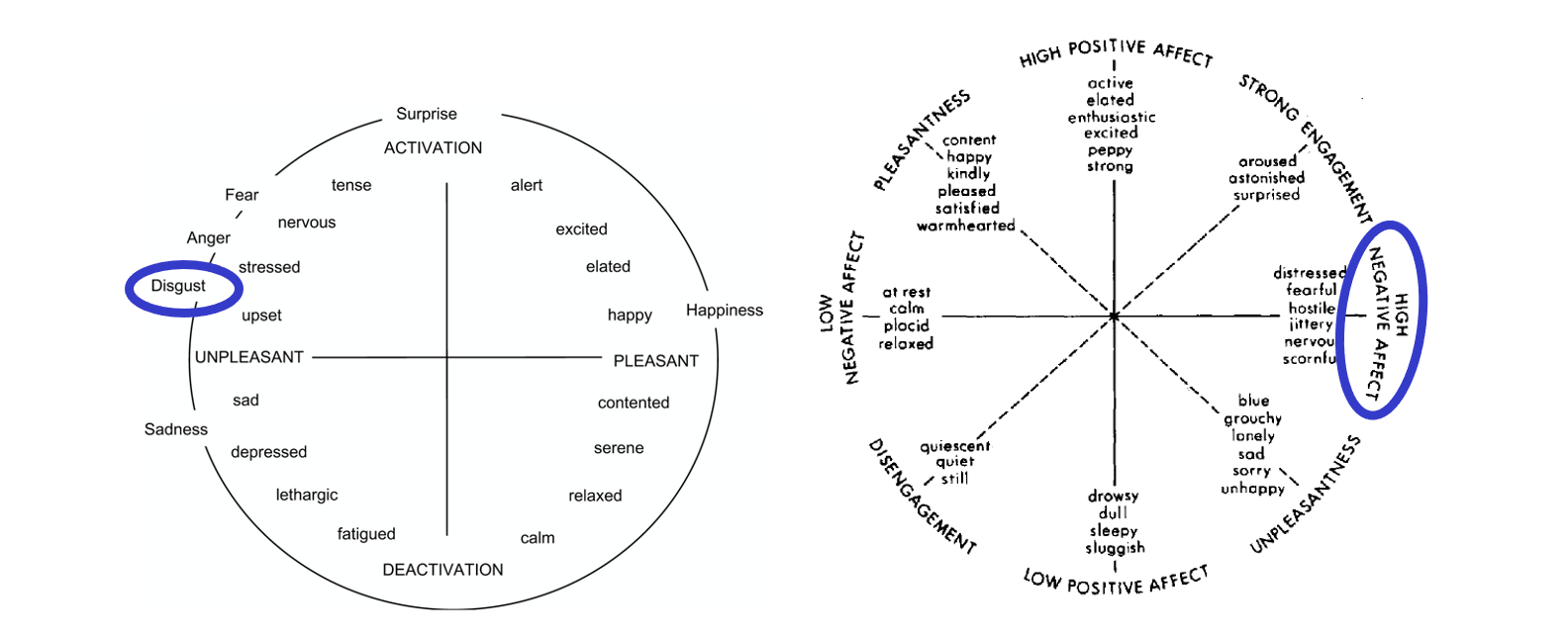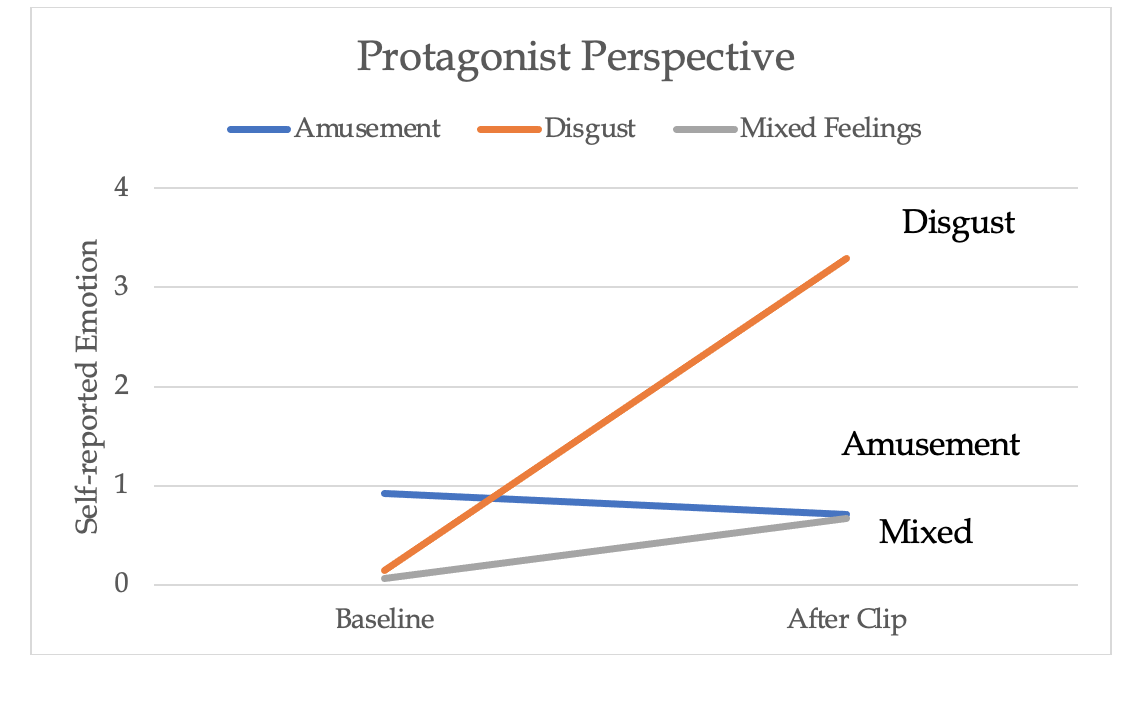Chapter 10: Disgust
Subjective Feelings
Russell (1980) views disgust as a highly unpleasant, moderately arousing emotion. Per this model, disgust is about equal in valence to anger and fear, but lower in arousal. Disgust’s location as moderately arousing may fit with the physiological research above finding that disgust activated both SNS and PNS systems.
Both Russell (1980) and Watson and Tellegen (1985) view disgust as a highly arousing, unpleasant emotion (see Figure 16). Although Watson and Tellegen (1985) do not provide a specific location for disgust on their model, disgust did load on the high negative affect factor (as did similar emotions list anger/hostile, and contempt).
Figure 16
Dimensional Models of Anger

Note. Russell (1980) model is on left; Watson and Tellegen (1985) model is on right. Left figure reproduced from “Independence and bipolarity in the structure of current affect,” by L. Feldman Barrett and J.A. Russell, 1998, Journal of Personality and Social Psychology, 74(4), p. 970 (https://doi.org/10.1037/0022-3514.74.4.967). Copyright 1998 by the American Psychological Association. Right figure reproduced “Toward a consensual structure of mood.,” by D.T. Watson and A. Tellegen, 1985, Psychological Bulletin, 98(2), p. 221 (https://doi.org/10.1037/0033-2909.98.2.219). Copyright 1985 by the American Psychological Association.
One study investigated the mixed emotion state of disgust and amusement (Hemenover & Schimmack, 2007). In this study, participants watched a video of a female character eating dog feces in a funny way. Participants were randomly assigned to imagine being the female character while watching the clip OR to view the clip as an outside observer. In both point-of-view conditions, participants reported an increase in self-reported disgust from baseline. But, only in the outsider perspective did participants report an increase in mixed feelings of disgust and amusement (see Figure 17). Taken together, these results show that when we view someone else engaging in disgusting behavior, that elicits mixed subjective feelings of disgust and amusement. But, when we imagine doing something disgusting and when we experience disgust, that elicits mostly disgust and not amusement.
Figure 17
Self-Reported Emotions for Outside and Protagonist Perspectives (Hemenover & Schimmack 2007)


Adapted from “That’s disgusting!…, but very amusing: Mixed feelings of amusement and disgust,” by S.H. Hemenover and U. Schimmack, 2007, Cognition and Emotion, 21(5), p. 1107 (https://doi.org/10.1080/02699930601057037). Copyright 2007 by Psychology Press.

